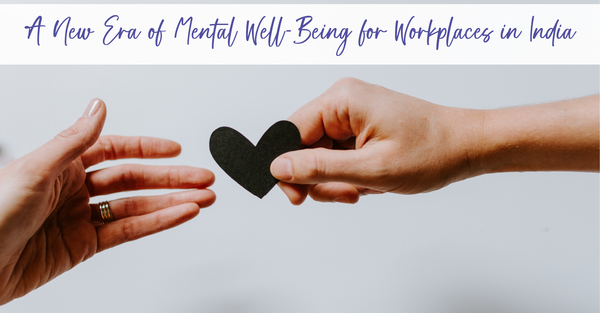Drop off your CV
We serve the global HR community through our offices located in Delhi, Hong Kong, London, New York, São Paulo and Singapore and have placed HR leaders in over 30 countries.
People say ‘employees are the backbone of the organisation’; this statement has ...

People say ‘employees are the backbone of the organisation’; this statement has never been truer, but just saying this isn’t enough, it needs to be made apparent.
Over the last two years, following the Pandemic, the pressures and demands have been felt across every sector, with companies having to change and adapt rapidly, often putting mental health to the back of the agenda. Employees may have gained the flexibility of working from home, but this does not stop the ongoing pressures of meetings, Zoom link after Zoom link, deadlines and a vicious cycle of poor work-life balance, leaving employees burnt out.
As we come out of the Pandemic and fully return to the office, here in India, there has been an increased focus on mental wellbeing to aid employees through change and help manage their mental health after a tough few years. This blog aims to show HR Leaders how they can work alongside their employees to create a mentally healthy workplace. Looking after your mental health, has and will always be, of utmost importance but for the most part, the topic has been vastly unaddressed in this country. In recent years, most companies have worked closely with their HR department purely to gauge the competency of their employees looking at things such as performance, training, and development. We have now seen a shift in focus from an HR perspective, post Pandemic companies are more focused on retaining their talent by ensuring they offer a space that promotes positive mental health.
Here, we have compiled some tips on how HR can help to enhance the mental health of all employees and what employees can do to aid their own wellbeing. Communication Employee wellbeing tends to fall under HR’s domain; from time to time it would be beneficial for HR leaders to discuss mental health issues with their employees and spread awareness through various outlets, including 1 on 1 meetings, group discussions, and having an open-door policy. Allowing for an interactive and open environment, which in turn reduces anxieties for employees and allows them to work with an open mind. Culture It is very important to make sure that employees feel a sense of belonging in the workplace. This can be done by celebrating wins, addressing issues, and showing compassion, care, and concern.
Enhancing that sense of community; strengthens the feeling of companionship, making employees feel appreciated and more motivated, which will help increase their productivity, aiding the success of the business. Mitigating Stress HR are considered the spokespeople of the employees and should therefore be responsible for reducing the impact of stress on them. According to a recent survey, employees are willing to quit rather than take on stress that will take a toll on their mental health. The topic of stress is something that needs to be discussed openly to be able to mitigate its root cause. Employee Assistance Programmes (EAP) An Employee Assistance Programme (EAP) is a great tool for companies to use, they intend to help employees deal with any problems they are having that may impact their work performance, health, or wellbeing.
Many companies specialise in helping run these programmes, they are a great way to show you are committed to making a mentally healthier workplace. General Good Practice A great way to remember the steps to take to enhance your wellbeing outside of the workplace is the ‘4 Ms of Mental Health’ Mindfulness- practicing 10-15 minutes of deep breathing, expressing gratitude, or enjoying nature. Movement- go for a walk; take a bike ride, stretch; it doesn’t matter what you are doing as long as you’re moving. Mastery- find a new hobby or skill; it’s a great way to keep your mind active and occupied outside of work. Meaningful engagement- be social, share a joke, laugh. Just acknowledging mental health issues isn’t enough. It’s imperative to ensure your leadership team is committed to supporting employees’ mental health, whilst keeping in mind that taking a ‘one size fits all’ approach to support does not work for everyone and should vary depending on the employees needs.
Organisations must consider what types of support would be most effective when it comes to prevention and intervention, maintaining a healthy environment, and improving the performance of the organisation. From my own experience, I believe resilience can take you a long way and is fundamental for good mental health and well-being. Everyday we face new challenges and can hit rock bottom. But it’s important to remember that we get back up again, we can’t let stress and anxiety get the better of us; it’s up to you how you bounce back, accommodate the challenges, and come up with better ways to transform the situation in a positive manner. Having a positive mindset not only helps us to survive, but also allow us to face any challenge in life and incentivise us to always move forward.
I would be interested to hear from any HR professionals who utilise the tips above or have recently implemented a mental health and wellbeing programme into their organisation.
Alternatively if you are a client seeking to expand your HR team or an HR candidate looking for your next move then please feel free to reach out to me at ss@elliottscotthr.com or via LinkedIn.